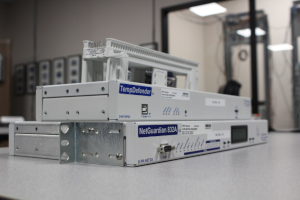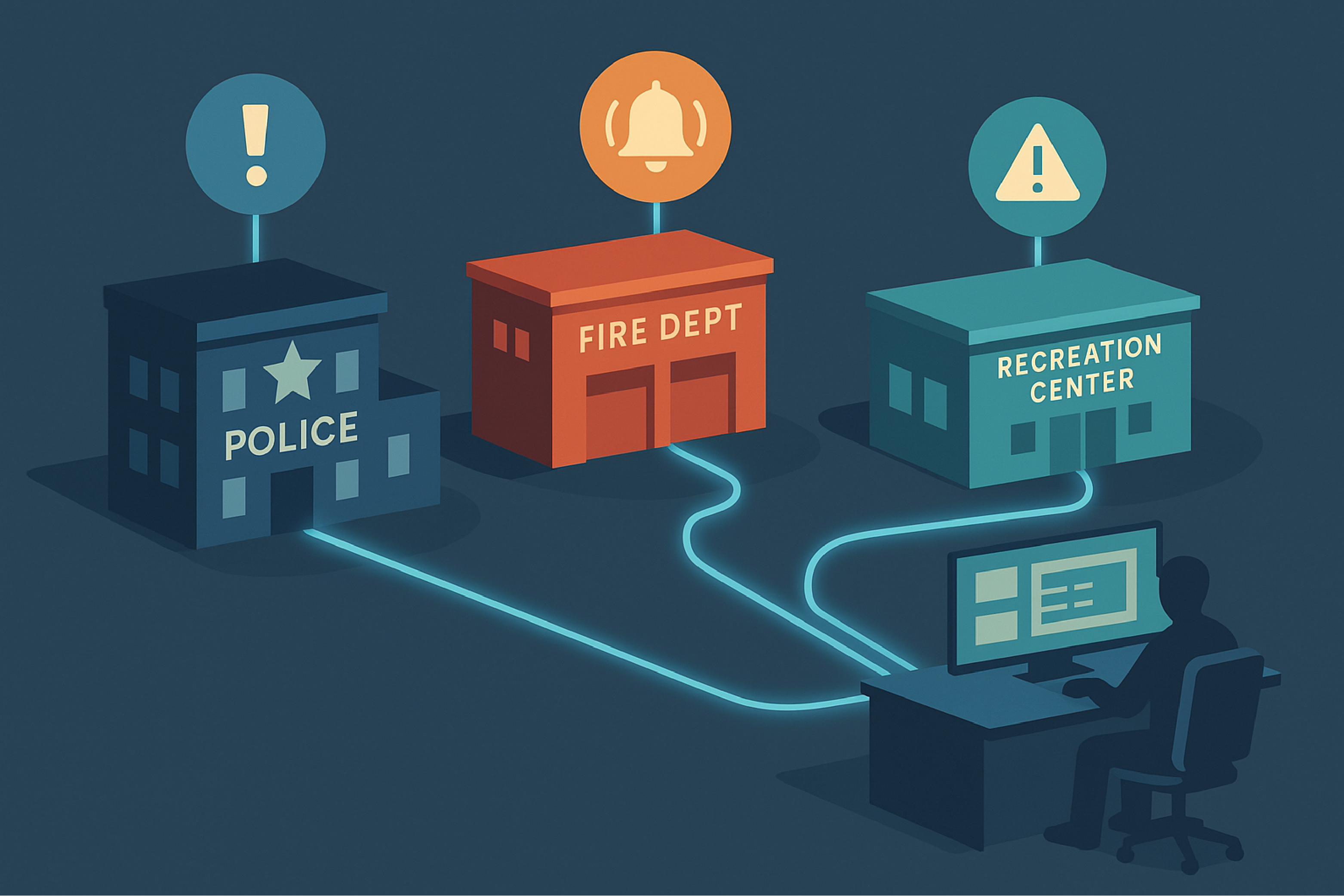Check out our White Paper Series!
A complete library of helpful advice and survival guides for every aspect of system monitoring and control.
1-800-693-0351
Have a specific question? Ask our team of expert engineers and get a specific answer!
Sign up for the next DPS Factory Training!

Whether you're new to our equipment or you've used it for years, DPS factory training is the best way to get more from your monitoring.
Reserve Your Seat TodayWhen you're responsible for critical municipal infrastructure - whether it's police dispatch, fire stations, or public works - alarm monitoring is mission-critical. Missed alerts or slow responses are not an option, so you definitely can't afford to rely on outdated systems.
Recently, a client came to us with exactly this situation. They were working with a city that's upgrading alarm systems across multiple buildings. Panic alarms, fire panels, and remote sites were all involved.
The goal was to route all alarms directly into the police dispatch center with no third-party delays or bottlenecks. They just needed clear, actionable alerts (delivered fast).
If that sounds like something you've been meaning to do at your own agency, you'll want to keep reading. The steps they're taking - and the solutions we're helping them explore - could solve a lot of the same problems you're facing right now.

This municipal government had a fairly typical setup:
At a glance, this looks OK. Unfortunately, as you dig a little deeper, the problems pile up:
And if you think those are minor issues, think about this:
A five-second delay in dispatching officers to a panic alarm could be the difference between stopping a violent suspect or arriving too late. It's not just about cost-efficiency. This is about safety, speed, and achieving compliance.
In this case, our client was clever. They had already spotted the warning signs. But not everyone can say the same.
Many public sector alarm systems start to fail over time due to:
When your fire panel trips an alarm, and that alarm goes to a third-party monitoring center, you're trusting someone else to pass that information to your dispatchers quickly - and accurately. That's a big risk.
Even worse, you're paying for that privilege every month, even as faster and cheaper alternatives exist.
Voice-grade circuit loops, four-wire analog circuits, dial-up modems, and even microwave point-to-point backhauls are on their way out. In this client's case, they had legacy radios and circuits that eventually got replaced with microwave - then ultimately IP-based networks.
That's the pattern we're seeing across the country (and on international projects also). Unfortunately, alarm systems don't automatically keep up with our changing world.
Many of these systems were deployed 10-20 years ago with a very specific mission. They weren't designed to be flexible or expandable for the unforeseeable problems of the next several decades.
When you want to add a few new panic alarms or pull in alarms from remote buildings, you may realize that your monitoring gear can't handle it. It's also possible that the software only runs on outdated OS platforms or that there's no support left from the original vendor.
That's not a modern monitoring system. That's a ticking time bomb.
So, what does this city want their new alarm system to look like?
It's a vision that many municipalities share, involving:
This eliminates the "just in this building" limitations. If someone presses a panic button in the rec center or gym, the alert should go straight to dispatch with all the info needed to respond fast.
Instead of routing fire alarms through a third-party vendor, they want to backhaul contact closures directly from the fire panels at three fire departments into the dispatch console. This creates important speed during emergencies.
These fire panel integrations require compact, intelligent devices that can live inside the panel (or above the ceiling if necessary) and send out SNMP traps when triggered.
The equipment needs to be:
Like many agencies, this one is already operating in a VoIP environment with no traditional landlines. Their alarm system must work over IP and offer cellular backup, especially for remote buildings.
And all of this has to work today, not in some idealized "next budget cycle" future.
This project feels practically custom-built for what DPS Telecom does best. We're not a third-party reseller trying to match generic products to your needs. We design and manufacture our own alarm monitoring devices right here in California.
That means we can offer compact, rugged solutions that directly address every one of this client's requirements:
This device is perfect for direct fire panel-to-dispatch integration.
This RTU is ideal for expanding panic alarm coverage at small and medium sites, especially when you have DIN rails on your walls or in your cabinets. You also sometimes see sections of DIN rail mounted in a 19"/23" equipment rack, but you would probably choose a rack-mount RTU at that point.
With this master, dispatchers can see all alarms with no extra training required.
Working through this client's situation gave us a great opportunity to think about what makes for a successful municipal monitoring upgrade.
Here are a few key takeaways you can use in your own planning:
In this case, the client had budgeted based on pricing for older gear - but hadn't finalized their purchase orders. That's the sweet spot. If you're early enough in the process, you can recommend smarter equipment that saves money long-term.
Some fire panels are tight on space. We've had clients who needed SNMP-trap-generating RTUs that could mount inside the panel, or just above it in the ceiling. Knowing your space limitations ahead of time can help you choose the right model and avoid expensive (and kludgy!) workarounds later.
This client went from voice loops to microwave to IP. You might be on the same path.
DPS devices can mediate between old and new, which is the use case where a lot of our new customized gear comes from. This makes it easier to gradually upgrade without breaking existing workflows.
Whether you're starting with three buildings or 30 or 300, choose equipment that can grow with you. The NetGuardian family supports expansion without requiring device replacement.
If you're responsible for keeping your city's facilities safe and connected, you already know the pain of legacy systems and third-party dependencies.
Let us help.
We can get you a customized proposal - including diagrams, pricing, and suggested equipment - that addresses your real-world needs. Whether you're expanding panic alarm coverage, integrating fire panels, or just starting to ditch dial-up, we've helped clients like you do exactly that.
You'll get:
Give us a call at 559-454-1600 or email sales@dpstele.com. Whether you're still gathering requirements or already halfway through the project, we're happy to help.
You don't have to figure it all out alone. Let's work together to build a system that's reliable, affordable, and totally under your control.

Andrew Erickson
Andrew Erickson is an Application Engineer at DPS Telecom, a manufacturer of semi-custom remote alarm monitoring systems based in Fresno, California. Andrew brings more than 19 years of experience building site monitoring solutions, developing intuitive user interfaces and documentation, and opt...